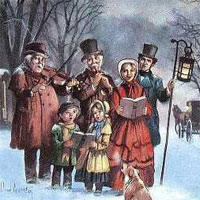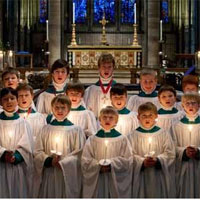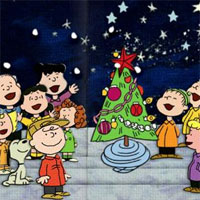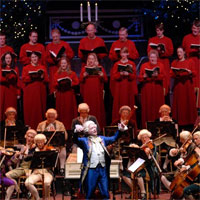T
he Christmas season didn't always come with its own sound track.
In fact, until the Middle Ages life in general didn't have too much of an audio feature. Up until then, there wasn't really music. There were just songs.
Early on, when daily existance pretty much revolved around the Church, the Church wasn't very keen on music. Just chanting and antiphons and the like. St. Jerome wrote in the third or fourth century that a Christian maiden "ought not even to know what a lyre or flute is like, or to what use it is put."
In 350 AD Pope Julius I set December 25 as the official date marking the birth of Jesus. They commmemorated it with a mass, but even a solumn high mass ("tridentine," with a celebrant, deacon and sub-deacon) featured only primative tunefullness.
But music caught up. Maybe Christmas finally gave them something to sing about. It's believed Church organ music was introduced in the 7th century during the papacy of Pope Vitalian, whose other notable accomplishment was restoring the Vatican's connection with Constantinople and the Eastern Church. That was good too.
Gregorian chant kicked in at the turn of the 8th century. It was codified by Pope Gregory and is still considered the music most suitable for worship by the Catholic church. This of course was all before the victrola, the radio or the electric guitar.
Most well-known carols were not even sung in church until the second half of the 19th century. Most were based on medieval chord patterns, which gives them their uniquely characteristic musical sound. Some would call it mournful, which is kind of ironic. (Many modern Christmas songs really do embrace sorrow ("Have Yourself a Merrry Little Christmas," "Please Come Home for Christmas," Blue Christmas"), but the early writers were probably just going for solumn.
Carols like "Good King Wenceslas" and "The Holly and the Ivy" can trace their roots back to the Middle Ages and are among the oldest musical compositions that still get regularly sung. Interestingly, the word "carol" may have made reference to dancing. Note the 3/4 waltz time common to many Christmas carols.
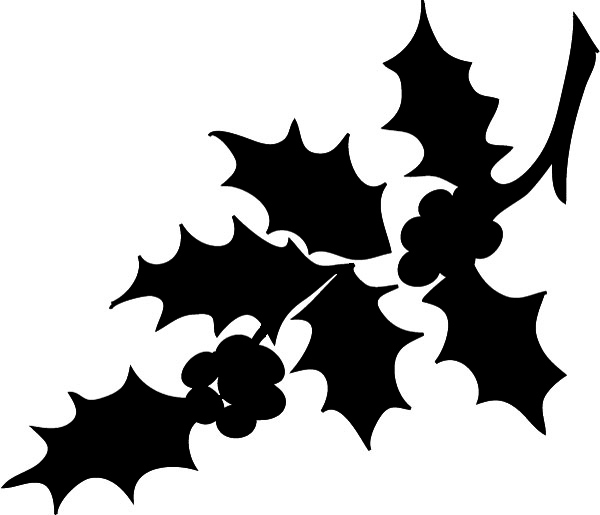 Isaac Watts, called "the Father of English Hymnody" composed "Joy to the World" in 1719. It is widely believed that he did not intend it to be sung only at Christmas.
Isaac Watts, called "the Father of English Hymnody" composed "Joy to the World" in 1719. It is widely believed that he did not intend it to be sung only at Christmas.
Charles Wesley, brother of Methodist founder John, and prolific hymn writer, penned the texts for at least three Christmas carols, of which the best known was originally entitled "Hark! How All the Welkin Rings." It was later edited by Wesley's co-worker, George Whitefield, to "Hark! the Herald Angels Sing." Everybody needs a good rewrite man. A tune from a cantata written by Felix Mendelssohn in 1840 was adapted by William H. Cummings to fit Wesley's words. This combination first appeared in "Hymns Ancient and Modern" in 1861.
The 19th century could rightly be called the golden age of Christmas music. For one thing, a number of the carols most popular today date back to that time. For another, curious as it might seem today, there was a general lack of enthusiasm at the dawn of the century for observing the Christmas holiday in general and for Christmas music in the bargain.
In 1822 Davies Gilbert published a compilation of old Christmas songs, motivated in no small part by an interest in preserving what he saw as a dying tradition.
Gilbert said in his introduction,
The Editor is desirous of preserving [the selected Christmas carols] in their actual forms, however distorted by false grammar or by obscurities, as specimens of times now passed away, and of religious feelings superseded by others of a different cast.
He is anxious also to preserve them on account of the delight they afforded him in his childhood, when the festivities of Christmas Eve were anticipated by many days of preparation, and prolonged through several weeks by repetitions and remembrances.
No worries. Even as Gilbert wrote, America was embracing successive waves of emotionalizing and personalizing Evangelical fervor. Charles Dickens and Washington Irving get some secular credit, too, but Christmas gradually made its way back into the public's hearts and minds.
